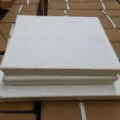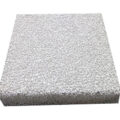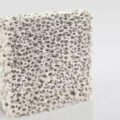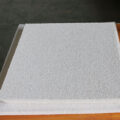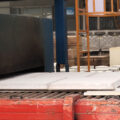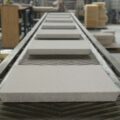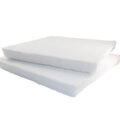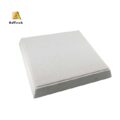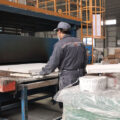The filtration result of the porous foam ceramic filter depends on the chemical composition of the inclusions in the melt, the shape of the foam ceramic filter, the size of the filter, the metal flow rate, the wettability of the surface of the filter plate to aluminum, the size of the inclusions, etc.

Ceramic foam filter Dimension
660x660x50(26″)
584x584x50(23″)
508x508x50(20″)
432x432x50(17″)
381x381x50(15″)
305x305x50(12″)
228x228x50(9″)
178x178x50(7″)
Ceramic foam filter Pore Size(PPI):10/20/30/40/50/60
Porous Foam Ceramic Filter Uses
The CFF filter box should be thoroughly cleaned before use to prevent refractory residues from falling into the molten aluminum.
The size and specifications of the porous ceramic foam filter and the filter box should be matched, and the matching gap and deflection angle between the two should be as small as possible.
When the ceramic foam filter is used, the pressure head is larger before the aluminum melt passes. After the melt passes through the alumina ceramic foam filter, the pressure head decreases rapidly, usually about 5mm. But by using a filter, the holes are gradually blocked by slag, which hinders the passage of the melt. And the liquid level difference on both sides gradually increases, until the flow through the filter cannot meet the casting requirements, now, a new filter needs to be replaced.
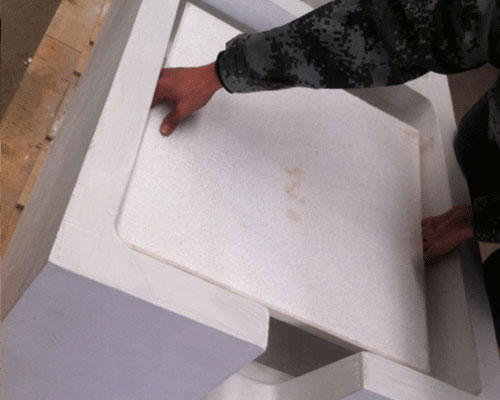
In order to reduce the contamination of metals by impurities, the following aluminum melt purification measures can also be used:
- According to the different chemical properties of molten metals or alloys, refractory materials with high chemical stability are used. Aluminum alloy should use high aluminum refractory lining.
- In order to ensure the purity requirements of certain alloys, new metals with higher purity are used.
- The flame furnace should use low-sulfur fuel: all tools in contact with the metal charge should be made of materials that will not bring impurities.
- For conversion alloys, they should be cleaned according to the purity and performance requirements of the two alloys.
- Pay attention to the choice of auxiliary materials.
- Strengthen charge management to prevent mixing.

